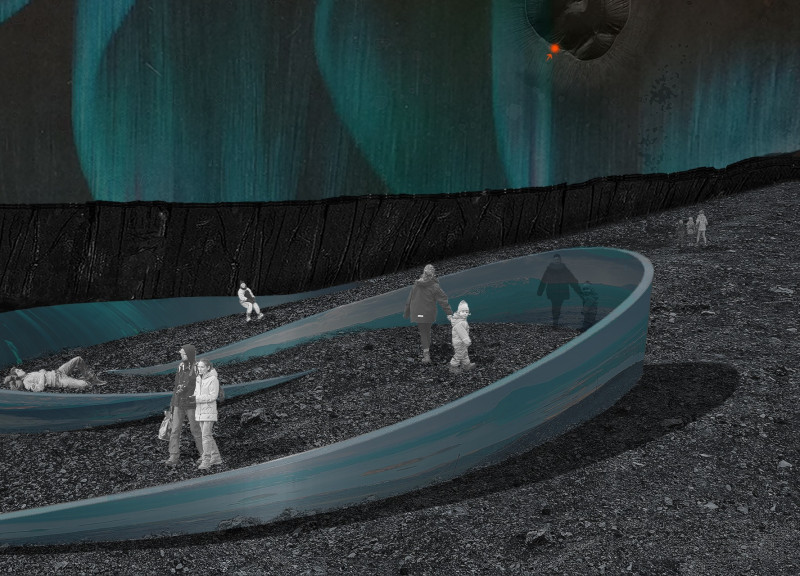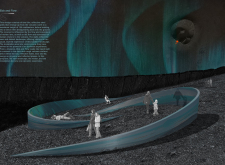5 key facts about this project
Ebb and Flow is an architectural installation located in the volcanic landscape of Iceland. The project features two thin, reflective steel walls that emerge from the ground, reaching a height of 150 centimeters. These walls twist into a bench and then gradually disappear back into the earth. The design concept draws inspiration from the movement of molten lava, aiming to create a space that engages visitors while encouraging reflection on their relationship to the surrounding environment.
Conceptual Framework
The design reflects a strong connection with the natural processes of the land. The walls act as a visual continuum, mirroring the landscape and inviting visitors to experience both near and distant views. This concept underscores the interaction between human presence and the geological features of the area, fostering a sense of contemplation for those who explore the installation.
Materiality
Reflective steel is the main material used in this installation. This choice is significant, as it allows the structure to blend with the environment. The reflective surfaces enhance the spatial experience, allowing light and landscape to interact dynamically. As visitors move around the installation, their image and the surrounding scenery are captured, creating a layered experience that bridges the gap between built form and nature.
Spatial Experience
Navigating the space created by Ebb and Flow offers a unique opportunity to connect with the landscape. The lower height of the walls encourages guests to engage closely with their surroundings. As they explore, they gain a deeper understanding of the geographical features of the region. The design creates an inviting atmosphere, prompting visitors to reflect on their connection to the land around them.
At ground level, the relationship between light and the reflective surfaces changes throughout the day. This dynamic quality adds a vibrant element to the installation, reinforcing its ties to the volcanic landscape. The experience is shaped not only by the design but also by the natural environment, grounding the installation within its unique context.


















































